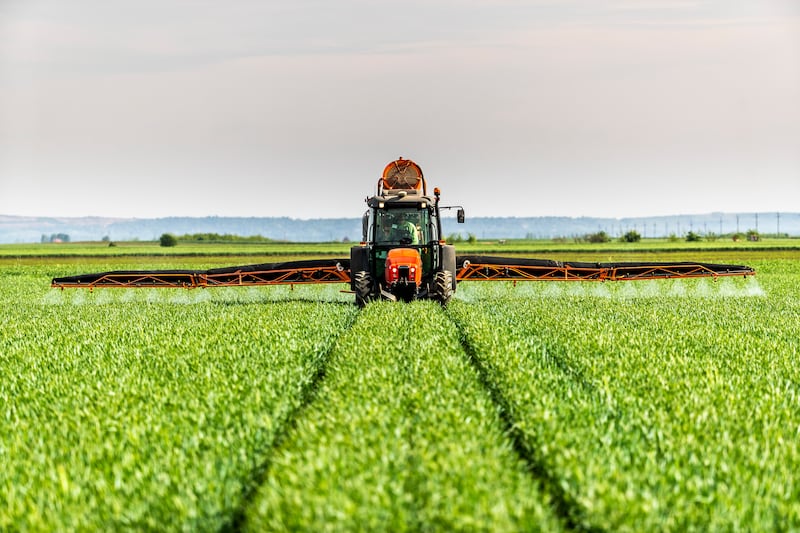Earlier this month, the Institute for Energy Economics and Financial Analysis published an extensive report on the effectiveness of 13 large-scale flagship projects addressing the capture and storage of carbon gasses from the atmosphere.
The institute is a US not-for-profit, funded by a number of global philanthropic foundations and individuals advocating for climate change measures and particularly for an accelerated transition to renewable energies. The carbon capture and storage projects surveyed account for about 55 per cent of all the carbon captured globally. In turn, the various schemes currently operational worldwide capture in aggregate just 0.1 per cent of global annual fossil fuel emissions.
Interest in carbon capture started in the 1970s, with “enhanced oil recovery” in which gas is pumped underground under pressure into an oilfield to recover crude oil that would otherwise not have been extracted. Carbon dioxide is frequently used as the injected gas, since it reduces the viscosity of the crude oil and is normally a cheaper gas than alternatives.
Pumping carbon dioxide underground so as to be able to extract yet more carbon-based fuel is an obvious contradiction in the context of climate change, and even more so since, over time, the stored carbon dioxide may leak back into the atmosphere.
Underdelivered
Of the enhanced oil recovery schemes surveyed, a number underdelivered on their original goals, and one was abandoned.
The most successful carbon capture schemes are two Norwegian undersea natural gas extraction projects. Carbon dioxide innate in the extracted natural gas is filtered and then pumped back into geologically stable sandstone formations undersea.
There are three general approaches to capturing carbon. The Norwegian systems are examples of “point-source” capture in which carbon dioxide is captured directly at its point of release into the atmosphere, such as in the smokestacks of power generation stations or fossil-fuelled steel mill plants.
Submarines and manned space vehicles use carbon dioxide “scrubbers” to clean their sealed atmospheres for their crews. Such direct air scrubbers can be more generally used to capture carbon dioxide from the atmosphere at large. However, the concentration of carbon dioxide in the atmosphere at large is about 0.04 per cent, as compared with the 15 per cent or so in flue gasses targeted by point-source capture, thus making the capture process significantly harder.
Finally, the third major approach is to use biological systems to sequester carbon dioxide, through trees, vegetation and crops.
Several start-ups are innovating with new approaches to carbon capture. Some, such as Carbon Clean (UK) and Climeworks (Switzerland), are using novel configurations of materials to increase the efficiency of capture. Novocarbo (Germany) uses pyrogenic capture to convert carbon dioxide into “biochar”, a charcoal-like substance that can be used to improve agricultural soil health. LanzaTech (New Zealand and US) uses proprietary synthetic enzymes to capture carbon dioxide from industrial processes, producing ethanol, acetone and other hydrocarbons as a direct replacement for fossil-fuel equivalents otherwise extracted from crude oil. It has filed to go public on Nasdaq at a $2.2 billion (€2.1 billion) valuation this quarter.

CarbonSpace.tech is an Irish start-up taking a different perspective. Taking a “what gets measured, gets done” approach, the company measures carbon emissions and sequestrations from agricultural land, urban areas and manufacturing complexes. Accurate measurements for the agricultural sector are particularly challenging, because of the land areas involved and the infeasibility of deploying permanent carbon dioxide sensors at scale.
Measurements made manually can only be sporadic, giving a high level of uncertainty of the full situation. CarbonSpace instead primarily uses satellite data, and claims to accurately plot emissions and sequestration to a granularity of a hectare anywhere in the world.
The satellite data is calibrated against long-term true conditions on the ground via more than 200 sensor sites across the world, which collaborate together as “Fluxnet”. Fluxnet was started in 1997 by Nasa to utilise data from its (then) new Terra and Aqua earth observatory satellites. There are about 50 Fluxnet sites across Europe but none listed in Ireland, and just one in the UK (in central London).
Using the calibrated data from the satellites, CarbonSpace can monitor the change in carbon dioxide emissions or sequestration over a given land footprint (eg a specific farm or forestry plantation), with historical data going back to 2000.
Dr Oleg Demidov is the company co-founder and CEO. He explained to me that his first customers are food production companies, which are particularly keen to measure improvements in emissions from their global supply chains.
CarbonSpace is a “virtual” start-up in the sense that its staff are in different cities. Dr Demidov himself is based in Barcelona. Nevertheless he chose Ireland as the location for his start-up, both because of the start-up environment in Ireland and the fact that one of his early investors, The Yield Lab, is based in Galway.
Carbon sequestration and monitoring has become an obvious strategic imperative in the context of climate change. It thus provides a rich opportunity for innovation, start-ups and investors. I anticipate a greater participation from Ireland.















